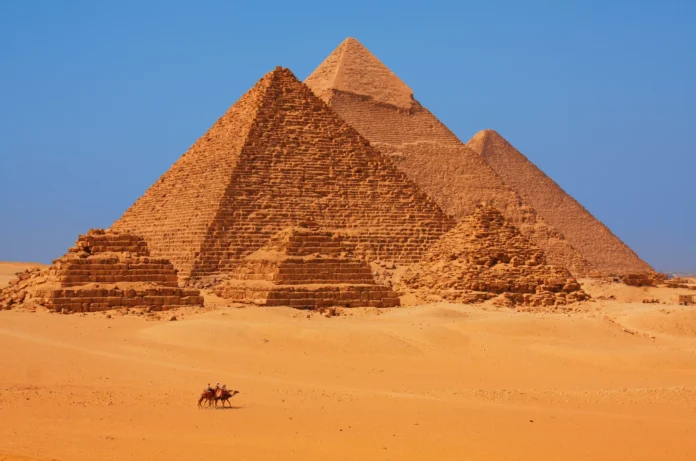A step pyramid, characterized by its layered structure, is a temple tower constructed from stone. This architectural form has been employed by ancient civilizations worldwide. Notably, the earliest pyramids in ancient Egypt were of the step pyramid design, and in Mesopotamia and Persia, towering temples known as ziggurats emerged as early as the 3rd millennium BC. However, the focus here is on the impressive step pyramids found in Mesoamerica, where some of the world’s largest and most beautiful pyramids were built.
Read also: Top Reasons to Go to Barcelona
- Candi Sukuh Candi Sukuh, a 15th-century Hindu temple on the western slope of Mount Lawu in Central Java, Indonesia, stands as a unique marvel. Distinguished by its step pyramid and surrounded by life-sized figures, it deviates from the typical Javanese Hindu and Buddhist temple architecture, displaying a curious resemblance to Maya structures. The pervasive theme of spiritual liberation is evident in reliefs and statues, and while not overtly erotic, the temple incorporates elements of a fertility cult.
- Tomb of the General The Tomb of the General, the burial tomb of King Jangsu in Ji’an, China, is a 20th monarch’s final resting place. King Jangsu reigned over Goguryeo during its golden age, and his tomb, known as the Pyramid of the East, measures 31 meters on each side and stands 13 meters high. This step pyramid symbolizes the historical zenith of Goguryeo, spanning from Mongolia to Chungju.
- Monte Alban Monte Alban, a ceremonial center in southern Mexico, perches on a hilltop in the Valley of Oaxaca. With a civic-ceremonial center rising 400 meters from the valley floor, it features the Gran Plaza, flanked by large pyramid mounds and stepped platforms. This ancient site showcases the architectural prowess of the Zapotec civilization.
- El Tajin El Tajín, an ancient city in present-day Mexico, flourished between 600 and 900 AD. Its notable Pyramid of the Niches rises 20 meters on seven layers, displaying a unique design in the Americas. El Tajín’s architectural marvels reflect the prowess of the Classic Veracruz culture.
- Caracol Perched 500 meters above sea level on the Vaca Plateau, Caracol in Belize was one of the largest ancient Maya cities. With the towering pyramid Canaa, reaching 43 meters, it stands as the tallest man-made structure in Belize. At its peak around 650 AD, Caracol boasted a population surpassing 150,000 inhabitants.
- Great Ziggurat of Ur The Ziggurat of Ur in modern-day Iraq, constructed around 2100 BC, is a well-preserved monument from the Sumerian era. Built by King Shulgi to assert his divine authority, the step pyramid was later reconstructed by King Nabonidus in the 6th century BC and again in the 20th century by Saddam Hussein.
- Calakmul Hidden within the jungles of Campeche, Mexico, Calakmul is a vast Mayan city with over 6,500 structures. Its 55-meter-high pyramid is the largest at the site, showcasing Mayan architectural brilliance.
- Chogha Zanbil Built by the Elamites in Iran around 1250 BC, Chogha Zanbil is a ziggurat dedicated to the god Inshushinak. This well-preserved structure, with five towers of varying heights, stands as a testament to Elamite architecture.
- Palenque Located on the western edge of the Maya empire in Chiapas, Mexico, Palenque boasts structures dating from 600 to 800 AD. The Temple of Inscriptions, a Mesoamerican pyramid built as a funerary monument, stands as a testament to the rich history of the Maya civilization.
- Uxmal Uxmal, meaning “built three times” in the Mayan language, is a well-preserved Pre-Columbian site in Mexico. The Pyramid of the Magician, the tallest structure at 115 feet, features oval layers, distinguishing it from other Mayan pyramids.
- Step Pyramid of Djoser The Step Pyramid of Djoser at the Saqqara necropolis was the first pyramid built by the ancient Egyptians. Constructed during the 27th century BC for Pharaoh Djoser by Vizier Imhotep, it evolved from a traditional mastaba into a six-stepped layer pyramid.
- Tikal Nestled in the rainforest of Guatemala, Tikal was the largest Mayan city between 200 and 900 AD. With six large step pyramids, including Temple-pyramid IV standing at 72 meters, Tikal showcases the grandeur of Mayan architecture.
Also Check: Guide to Traveling in Bolivia
- Chichen Itza Dominating the archaeological site of Chichen Itza in Mexico, El Castillo is a spectacular Mayan temple with astronomical significance. Its design, featuring 91 steps on each face and a shared step at the top, adds up to 365, symbolizing the days in a year.
- Teotihuacan Emerging in the 2nd century BC, Teotihuacan in the Valley of Mexico flourished as a metropolis. The Pyramid of the Sun, towering at 246 feet, stands as one of the largest structures in Mesoamerica. Built around 100 AD, it continues to captivate with its historical significance and architectural grandeur.






























